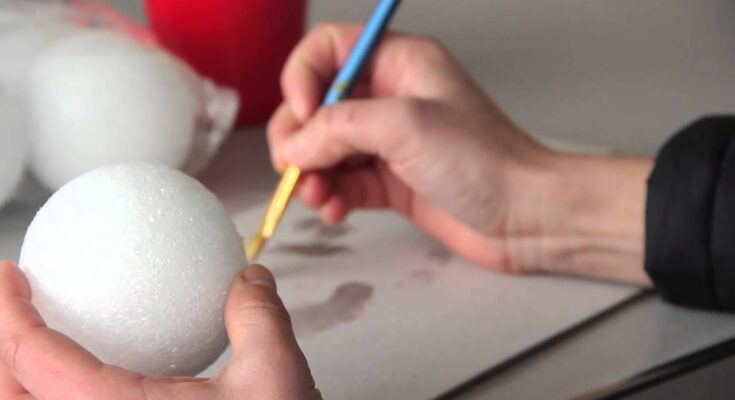Styrofoam is one of those materials that while light and inexpensive, can be a pain to paint. Most people will tell you to use acrylic paint. Acrylic paint is fine but it doesn’t work well on Styrofoam. Thus, it is important to choose the best paint for Styrofoam
I have tried to paint Styrofoam multiple times, but have never been fully satisfied with the results. I thought that I needed to just deal with it, but after some experimentation, I found a solution to my problem.
How to paint Styrofoam?
Styrofoam is a versatile material that can be used for a variety of craft projects. It is relatively inexpensive and easy to work with, making it a great option for those who are new to painting. While there are a few different ways to paint Styrofoam, the following steps will provide you with the best results.
Before you begin, it is important to clean the surface of the Styrofoam. This will help the paint to adhere better and will also prevent any unwanted blemishes. Once the surface is clean, you can begin applying the paint. It is best to use a brush or a roller for this, as spraying the paint on can cause it to drip and run.
When painting Styrofoam, it is important to use a paint that is specifically designed for the material. These paints are usually water-based and have a low VOC, making them safe to use indoors. Apply the paint in thin, even layers, allowing each layer to dry completely before adding the next. Once you have finished painting, you can seal the surface with a clear sealant to protect the paint and extend its lifespan.
Can you use acrylic paint to paint Styrofoam
Acrylic paint can be used to paint styrofoam, but it is not the best type of paint to use for this material as I have mentioned. Styrofoam is a porous material, so the paint will not adhere well to it and is likely to chip or flake off over time. If you want to paint styrofoam, you would be better off using spray paint designed specifically for this material.
How to paint styrofoam head
Styrofoam heads are a popular choice for painting projects because they are easy to work with and don’t require any special preparation. Just about any type of paint will adhere to styrofoam, so you can use whatever you have on hand.
The key to painting styrofoam heads is to use multiple thin layers of paint, rather than trying to cover the entire head in one thick coat. This will help to prevent the paint from cracking or peeling.
Latex paint on styrofoam
Latex paint painter and decorator in Birmingham is one of the most commonly used types of paint, and it can be used on a variety of surfaces, including styrofoam. Latex paint is known for its durability and resistance to moisture, making it a good choice for surfaces that may be exposed to moisture or humidity.
When painting styrofoam, it is important to use a paint that is specifically designed for use on styrofoam. This type of paint will adhere well to the surface and will not cause the styrofoam to crumble or flake off.
waterproof paint for styrofoam
Styrofoam is that it is not waterproof. This can be a problem if you want to use styrofoam in an area where it might be exposed to water.
One solution to this problem is to use waterproof paint for styrofoam. This type of paint is designed to create a waterproof barrier on the surface of the styrofoam. This can help to protect the styrofoam from water damage and make it more durable.
Waterproof paint for styrofoam is available in a variety of colors. This can allow you to choose a paint color that matches the rest of the materials in your project. The paint can also be applied in a variety of thicknesses, depending on the level of protection you need.
If you are using styrofoam in an area where it might be exposed to water, consider using waterproof paint to protect it. This type of paint can help to extend the lifespan of your styrofoam and keep it looking its best.
All in all
If you are looking to make your own DIY projects at home to save money, then you need to learn how to paint Styrofoam. Styrofoam is a great material for DIY projects because it is cheap, easy to work with and it is lightweight.

